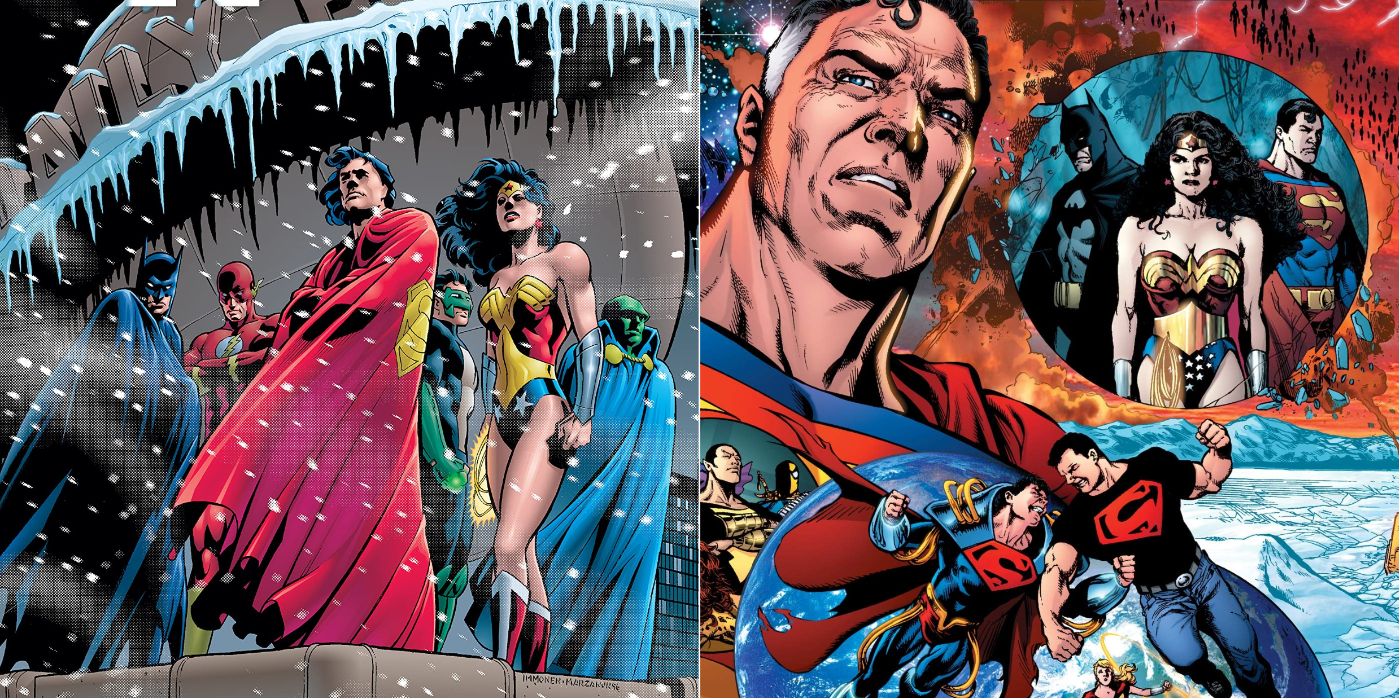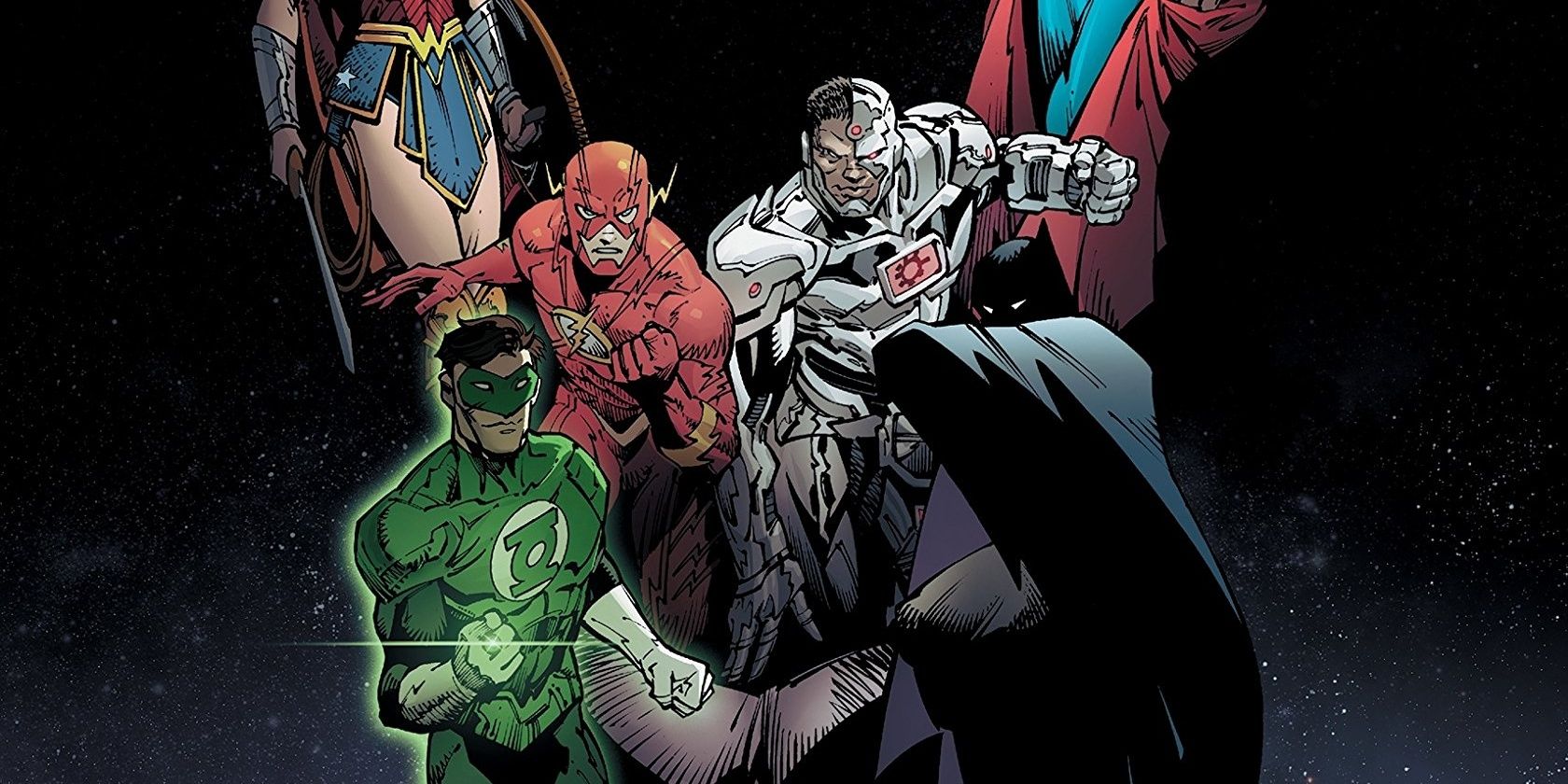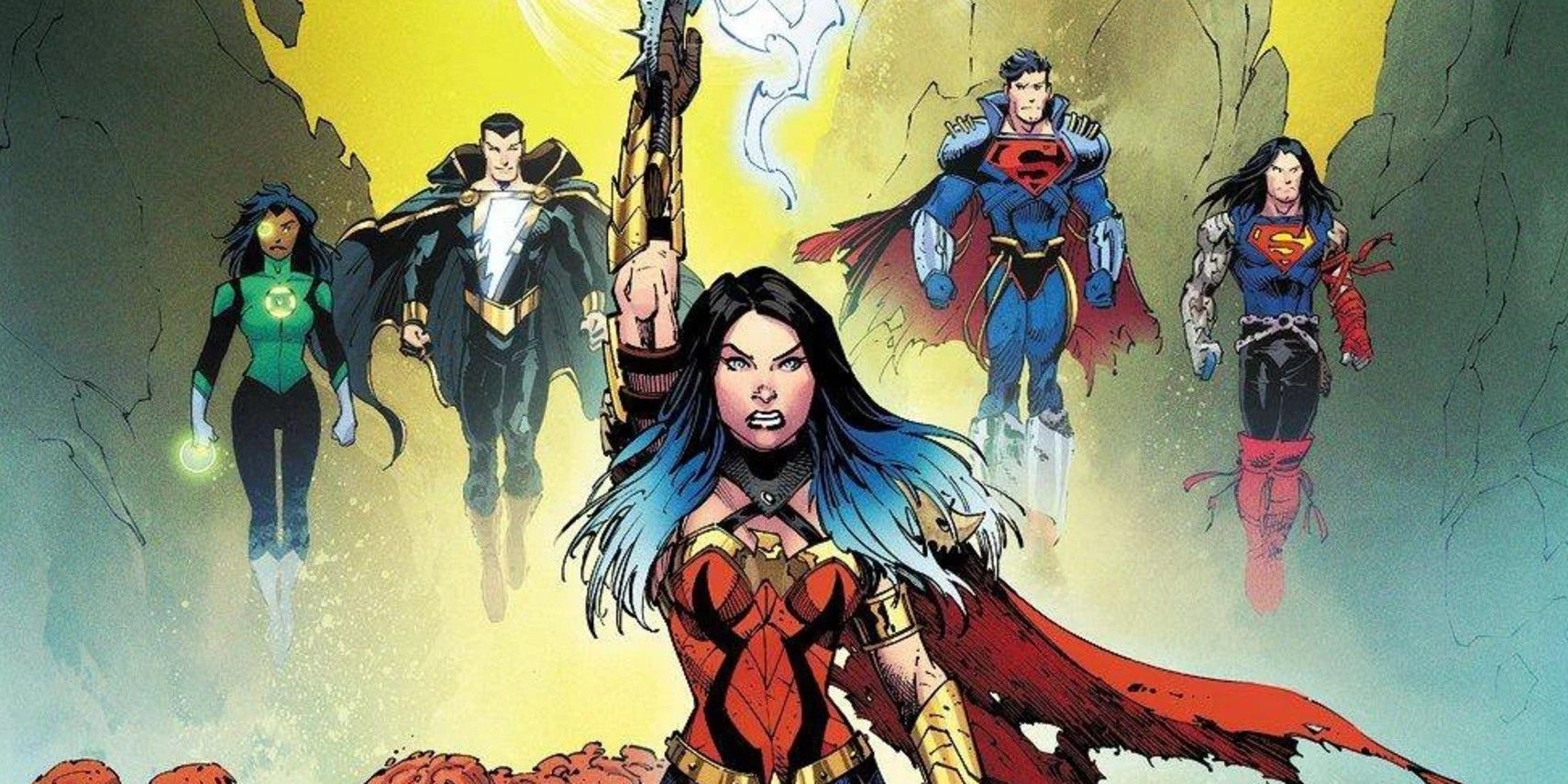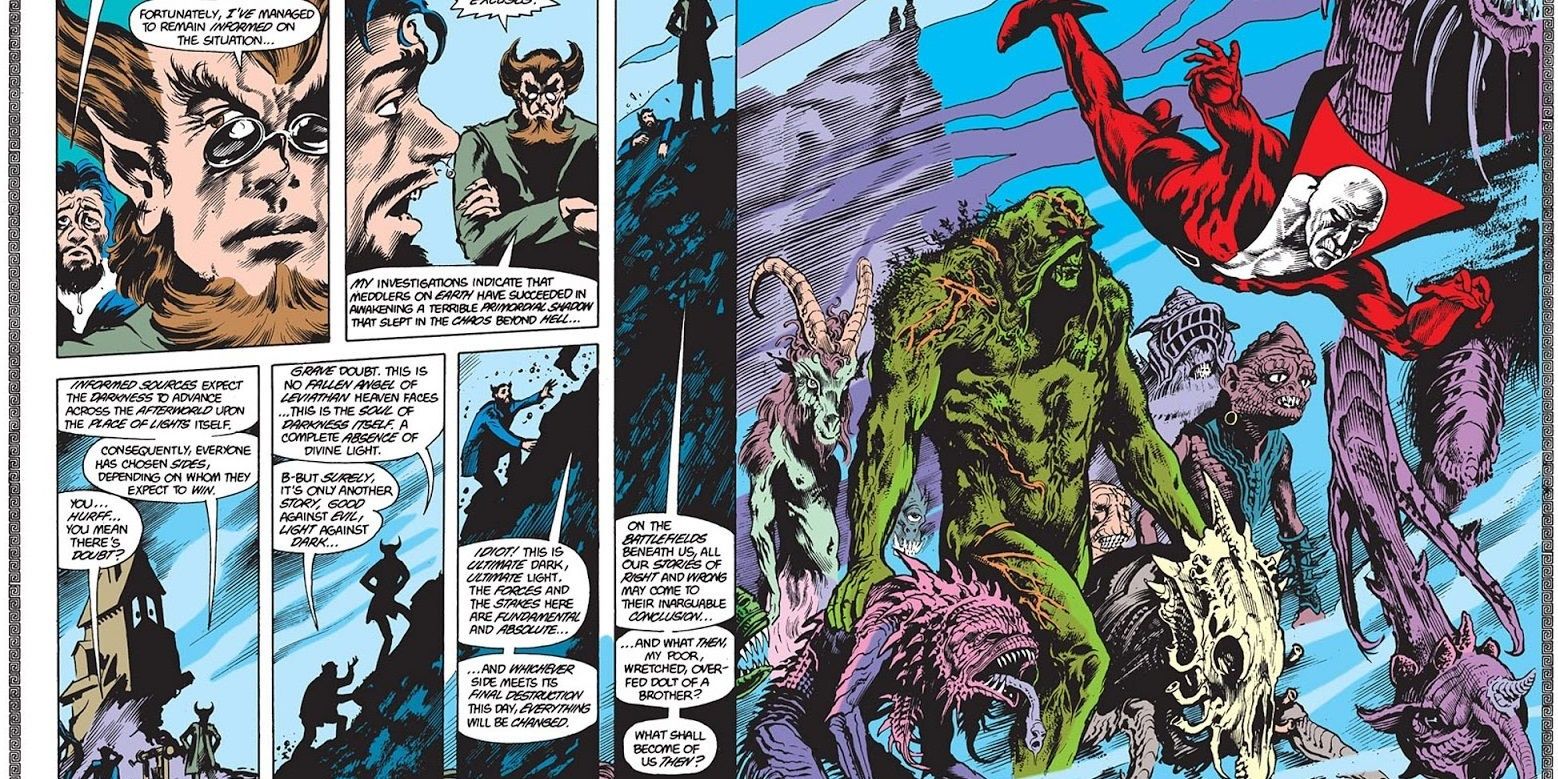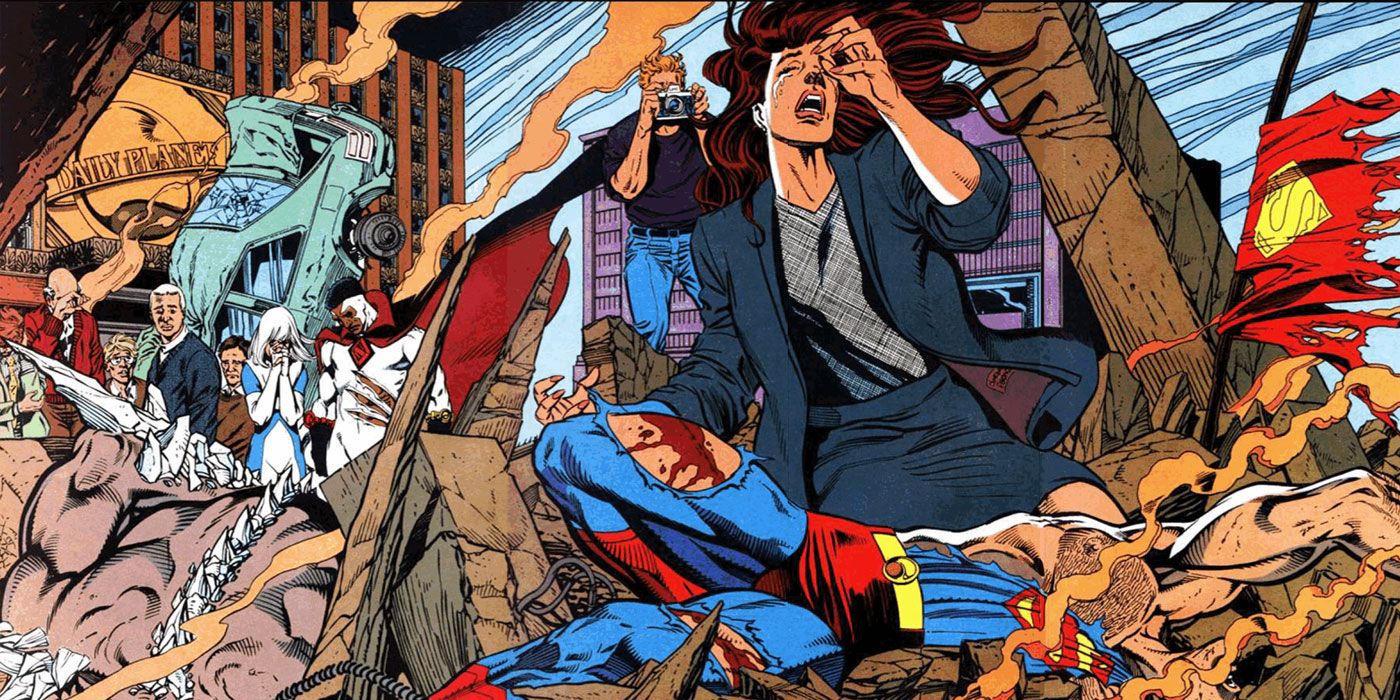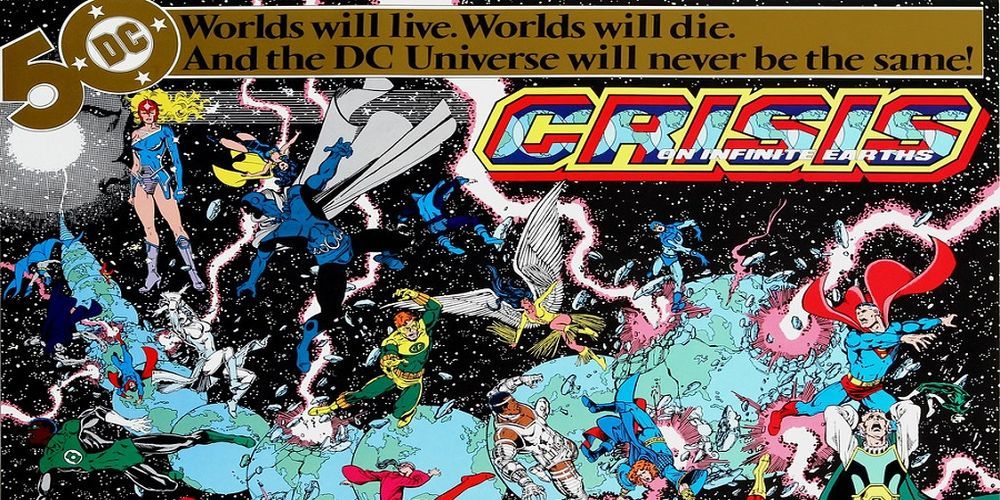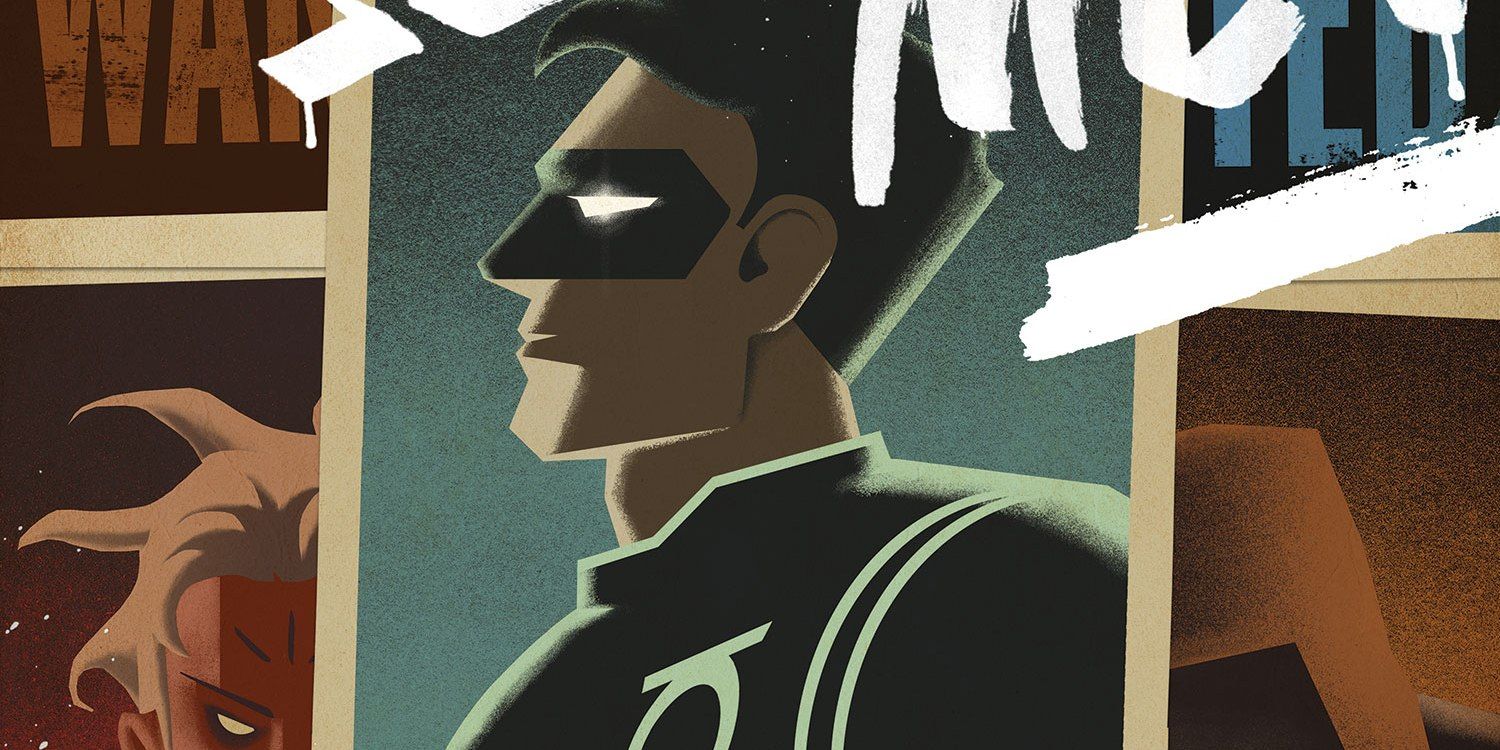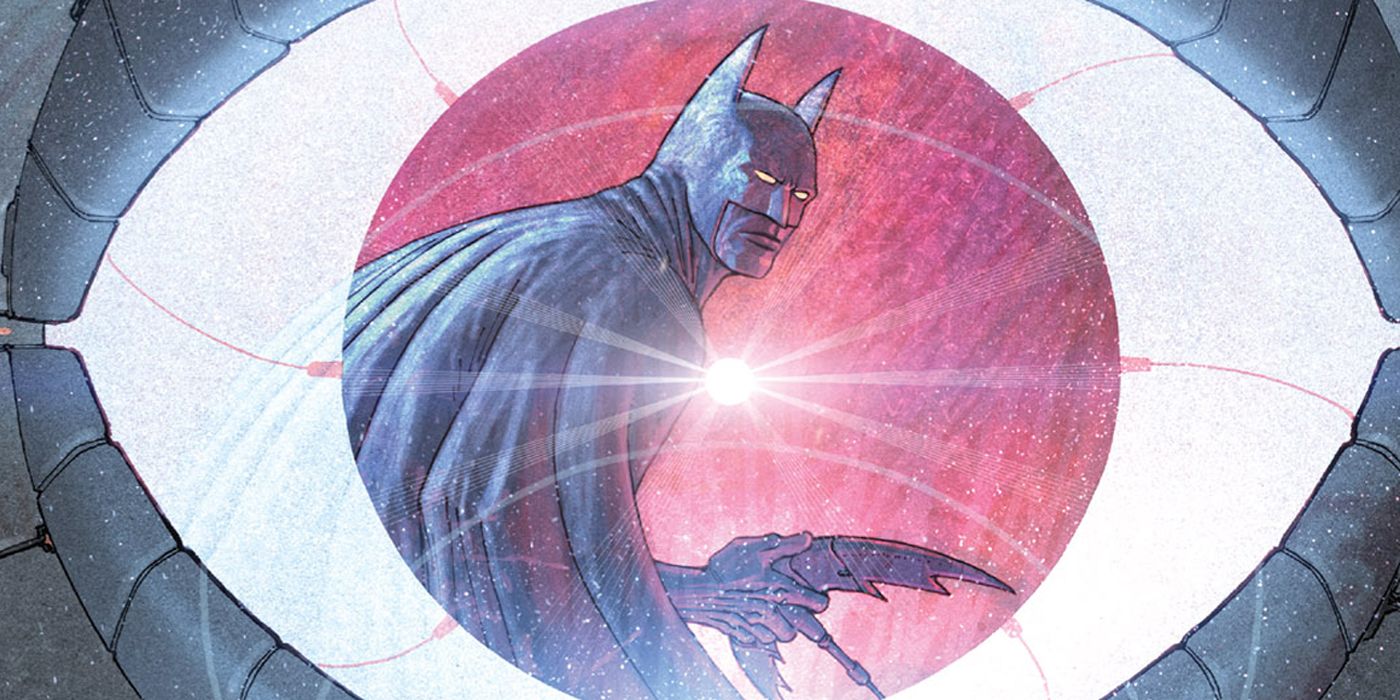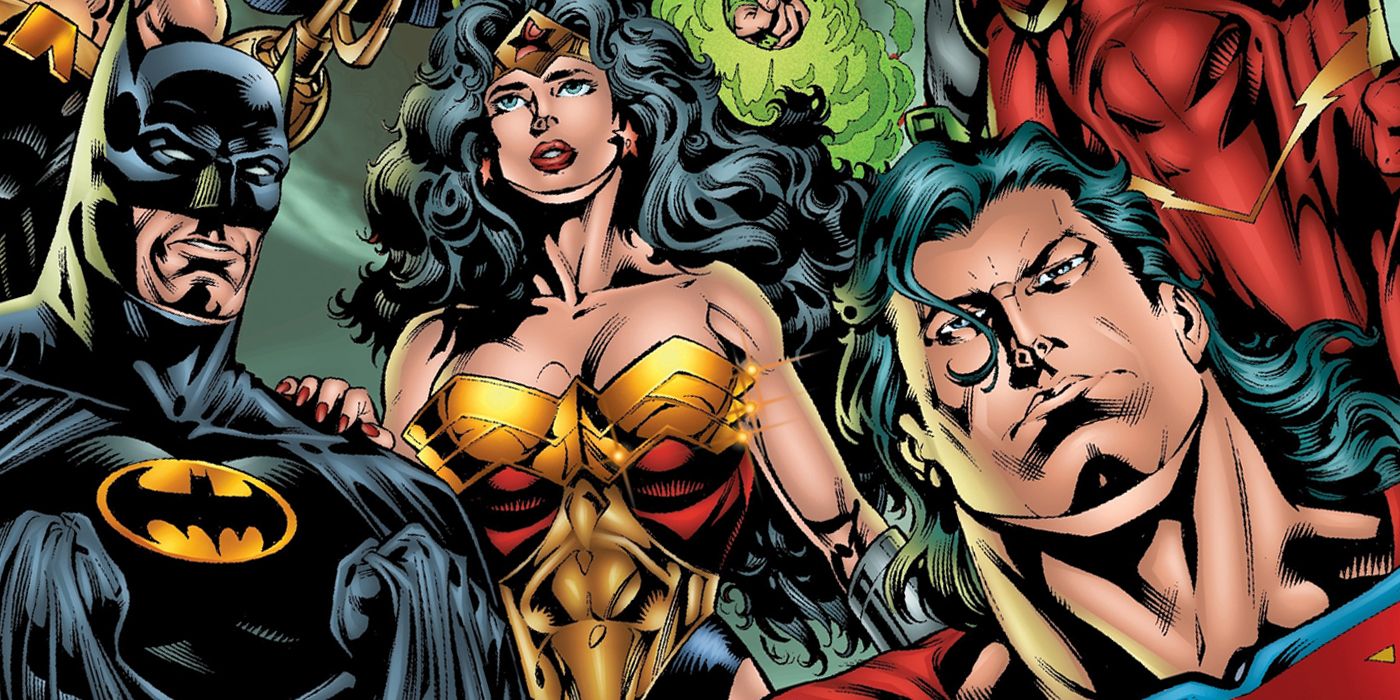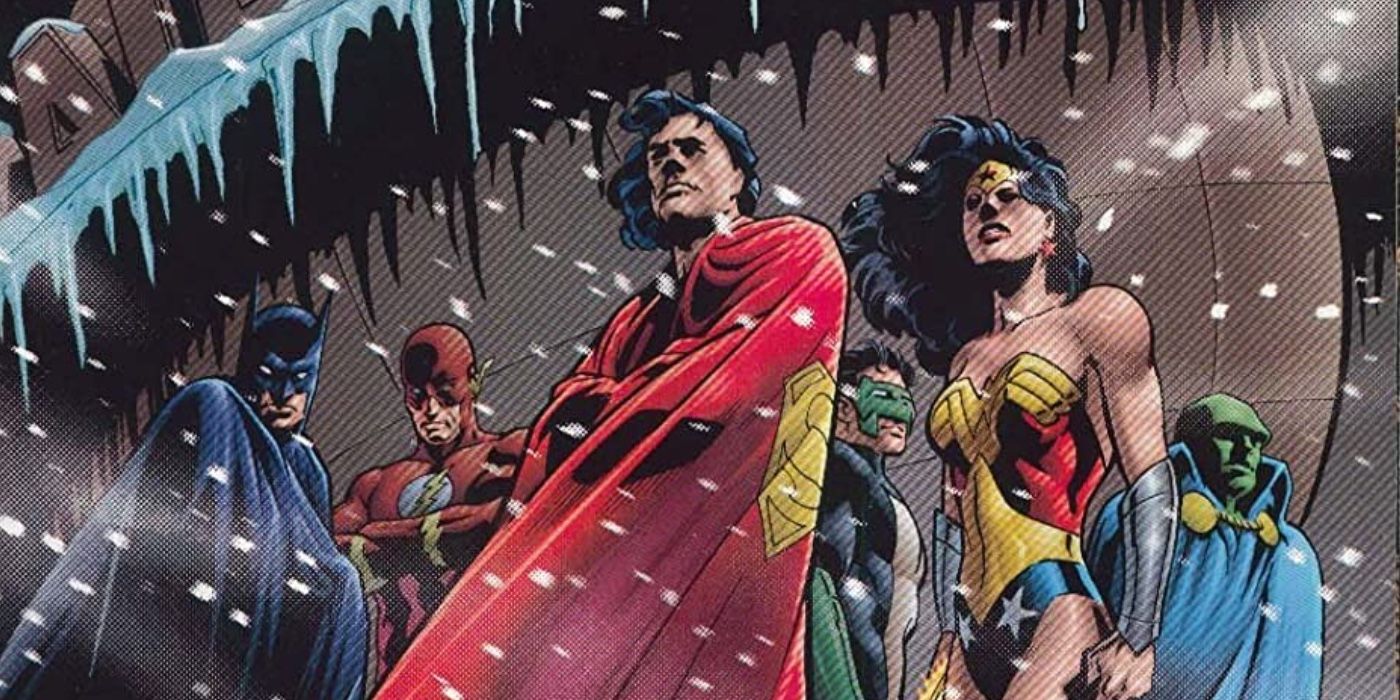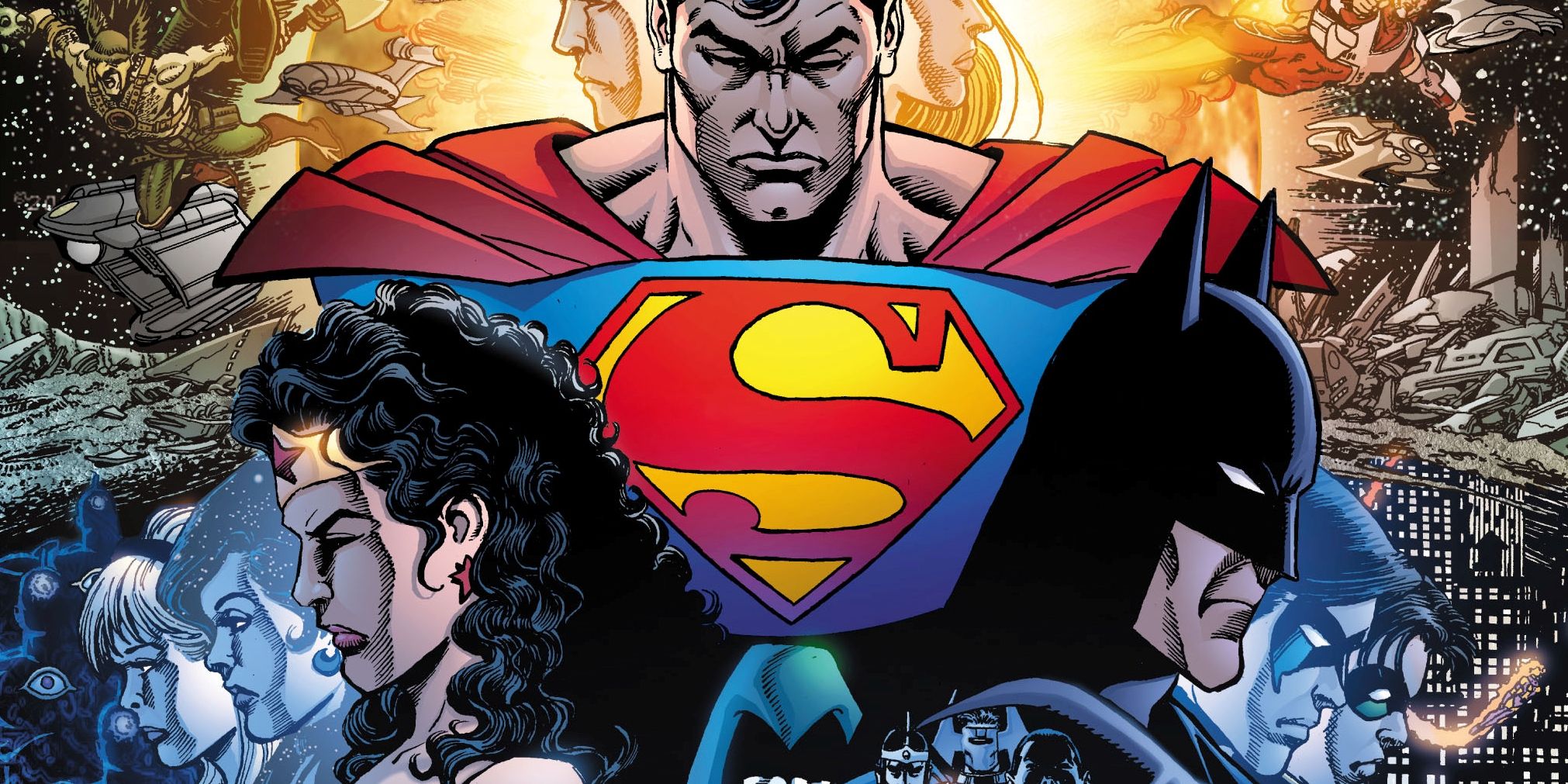DC has told some great stories over the years, but not all of them have been because of the villain. DC's villains count some of comics' greatest among their number, but there are also villains who aren't so great. Sure, they have cool powers and are threatening, but beyond that, they're just evil. They're one-dimensional or lacking in some way.
Villains can be a very important part of a comic, but not every story needs an amazing, three-dimensional, fully realized antagonist. Sometimes, they just need to be powerful and evil for the story to work, serving the story just by being the enemy.
10 Dark Knights Metal Works Despite Barbatos Being A Non-Entity
Dark Knights: Metal, by writer Scott Snyder and artist Greg Capullo, was the first big event of the Rebirth era. Built out of ideas laid down in Snyder and Capullo's Batman, the story pitted the heroes against Barbatos and the forces of the Dark Multiverse, including the Dark Knights, evil versions of Batman, each with the power of a Justice Leaguer.
It's a great story, but Barbatos is just a powerful boogeyman that waits in the wings for the entire story. The Dark Knights are cool in their own way, but they're basically all the same — evil versions of the Caped Crusader who take the powers of a fellow hero and then kill the rest. The story works in spite of the villains rather than because of them.
9 Death Metal Stars The Gary Stu Of DC Villains: The Batman Who Laughs
Dark Knights: Metal got a sequel, built out of Snyder's Justice League run. Death Metal began with the Multiverse under the thumb of Perpetua, an all-powerful being, and her right hand, the Batman Who Laughs. There's a lot to love about the story, but the villains aren't a part of that.
Perpetua is just a generic ultra-powerful villain with one-dimensional evil motives. The Batman Who Laughs, though, is another story. He was the Gary Stu of DC's villains for a few years. Everyone was scared of him, he always won one way or another, and he just kept getting more powerful. This story followed suit, but it definitely worked well.
8 "American Gothic" Pit Swamp Thing And Friends Against The Great Darkness
"American Gothic," by writer Alan Moore and artists Jon Totleben, Stephen Bissette, Rick Veitch, and Stan Woch, is the pinnacle of Moore's time on Saga Of The Swamp Thing. The story follows Swamp Thing, led by John Constantine, trying to stop a mysterious threat from gaining the power to destroy reality and ends in Hell with Swamp Thing and the magical powers of the Earth battling the Great Darkness.
The Great Darkness is just nothingness as an entity. There's nothing to it, which is exactly the point and what made it so dangerous. "American Gothic" is so great because it's a travelogue through the dark soul of America, not because the Great Darkness is an iconic villain.
7 The Death Of Superman Is Anchored By A Rage Monster
The Death Of Superman is a massively influential story that set DC in a new direction of destroying and replacing its icons. It ran through all four Superman titles and Justice League America, with creators like Dan Jurgens, Louise Simonson, Roger Stern, Jerry Ordway, Jon Bogdanove, Tom Grummet, Butch Guice, and more. It's a fun story that gives readers exactly what it advertised.
As far as it goes, Doomsday is an extremely lackluster villain. He's just a powerful rage monster. He doesn't say anything, just continually rampages forward. He's a plot device more than anything else, which is perfectly fine for this story.
6 Crisis On Infinite Earths Works Because Anti-Monitor Is A Generic Villain
Crisis On Infinite Earths set the standard for every event book that came after it. Written by Marv Wolfman with art by George Pèrez, it's an epic like no other and changed the DC Universe for decades after it was over. It was a love letter to the Multiverse it was about to replace, pitting the heroes against a universe-destroying monster, the Anti-Monitor.
The Anti-Monitor was a classic evil villain with no greater motive than desiring destruction. That was perfectly fine for the story; all he needed to do was be evil and challenge the greatest heroes in the Multiverse, which he accomplished admirably.
5 The Omega Men Pitted The Titular Freedom Fighters Against An Evil Empire
Tom King has been responsible for some amazing stories, often taking B and C list concepts and making them shine. The Omega Men, with artist Barnaby Bagenda, pit the team of freedom fighters, along with Green Lantern Kyle Rayner, against the evil leaders of the Vega System in a battle to free the planets therein.
Their foes are pretty much just an evil space empire cliché, but that works for the story. It's not about the villains but about the lengths a group of freedom fighters will go to win and how the horrors of war and insurgency affect those within the bloody quagmire.
4 The OMAC Project Uses The Implacable Nature Of Its Villains To Make Up For Their Simplicity
The OMAC Project is a six-issue masterpiece of superhero spy action. Written by Greg Rucka with art by Jesus Saiz, it sees Sasha Bordeaux, Batman, and more vie with Brother Eye and its OMACs, powerful nanite-infected cyborgs made to destroy superhumans. It's an action-packed story that keeps readers on the edge of their seats through its run.
Brother Eye is a basic evil AI, grown beyond his creator and out to succeed in his mission no matter what. The OMACs are just implacable killing machines. However, they're exactly what the story calls for; they don't need to be anything else for this to be a great read.
3 JLA: New World Order's Hyperclan Are Just Powerful Alien Invaders
After the doldrums of the post-JLI years, JLA: New World Order redefined the Justice League, bringing the Big Seven League back to prominence. Written by Grant Morrison with art by Howard Porter, it introduced readers to the Hyperclan, a new team of proactive "heroes" who reveal their true colors. They take the League hostage until Batman and Martian Manhunter discover their secret and turn the tables on them.
The Hyperclan are cool designs and powerful foes, but they're just White Martians out to conquer the Earth. They're powerful aliens masquerading as heroes, and the individual members don't have any personality other than evil. That's okay, though, as all they need is to be powerful enough to challenge the League.
2 Final Night Doesn't Really Have A Villain To Speak Of
Final Night is a highly underrated event. Written by Karl Kesel with art by Stuart Immonen, the story revolves around the heroes of the Earth trying to reignite the Sun after it's attacked by a Sun-Eater. Everything fails, and the eventual end of life on the planet gets closer and closer until help comes from a most unexpected source.
It's not that Final Night has a bad villain; it doesn't really have any villain. The Sun-Eater is already gone by the time the story really gets underway. It's all about the dread of an unstoppable death and the sacrifice needed in order to stop it.
1 Infinite Crisis Turns The Old Multiverse's Saviors Into Villains
Infinite Crisis was DC's biggest event of the 2000s and one of its best. A sequel to Crisis On Infinite Earths, written by Geoff Johns with art by Phil Jimenez, George Pèrez, Ivan Reis, and Jerry Ordway, the story pit the fractured heroes of the Earth against the Society and their benefactors: Alexander Luthor of the old Earth-3 and Superboy-Prime.
Luthor and Prime helped defeat the Anti-Monitor in Crisis On Infinite Earths, but seeing the DC Universe they fought for turn "dark" made them want to destroy it all and start over again. It's as flimsy a motive as any, but the story worked very well despite their simplistic reasoning and out-of-character actions.

